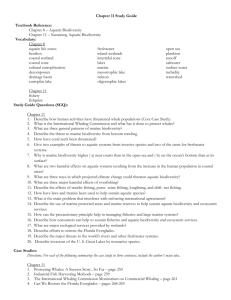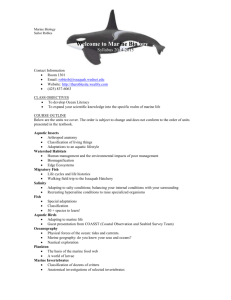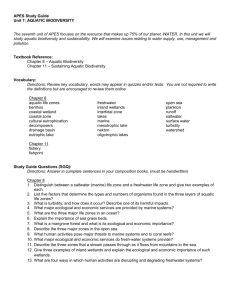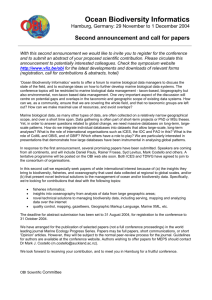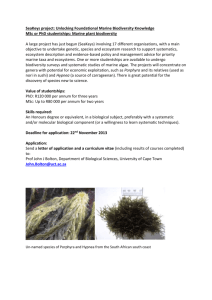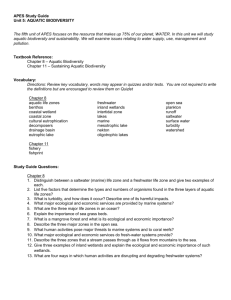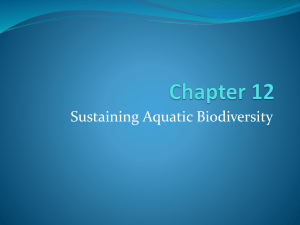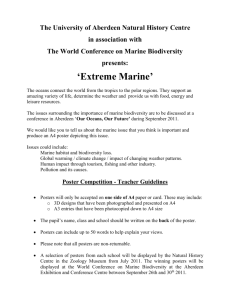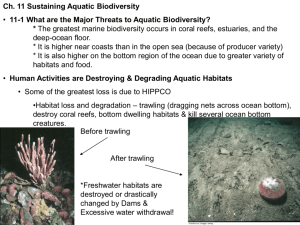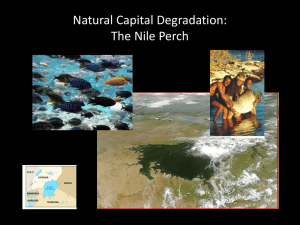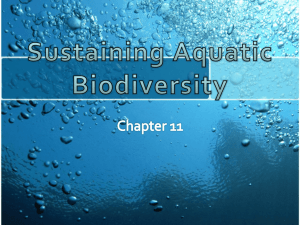Chapter 12: Sustaining Aquatic Biodiversity Concepts
advertisement
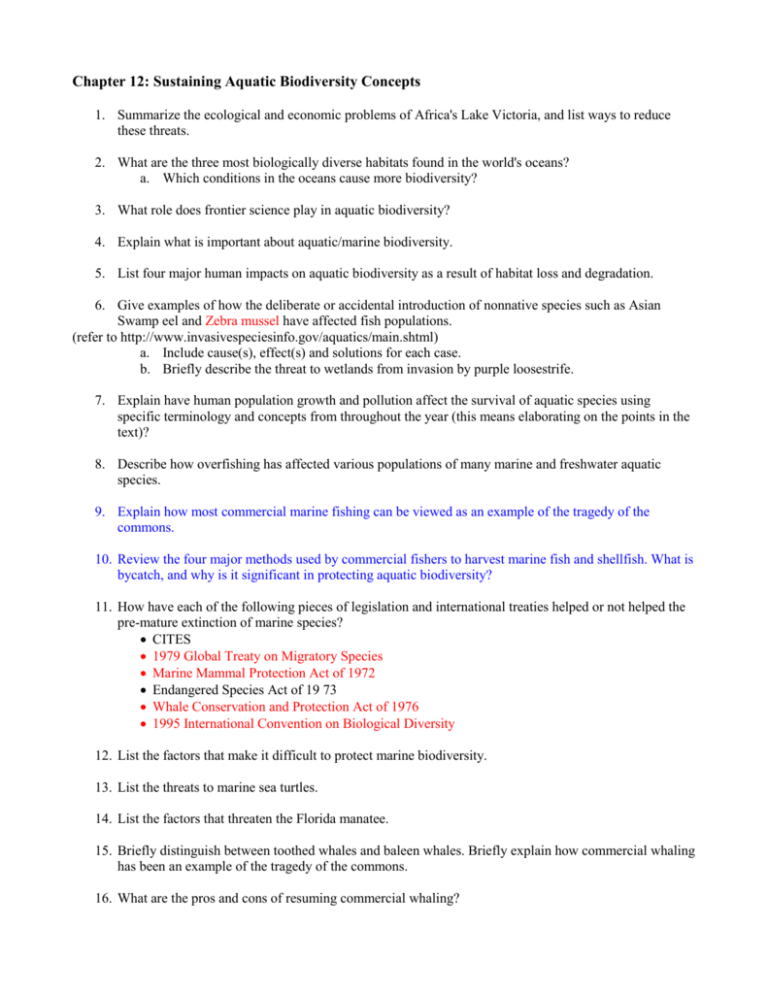
Chapter 12: Sustaining Aquatic Biodiversity Concepts 1. Summarize the ecological and economic problems of Africa's Lake Victoria, and list ways to reduce these threats. 2. What are the three most biologically diverse habitats found in the world's oceans? a. Which conditions in the oceans cause more biodiversity? 3. What role does frontier science play in aquatic biodiversity? 4. Explain what is important about aquatic/marine biodiversity. 5. List four major human impacts on aquatic biodiversity as a result of habitat loss and degradation. 6. Give examples of how the deliberate or accidental introduction of nonnative species such as Asian Swamp eel and Zebra mussel have affected fish populations. (refer to http://www.invasivespeciesinfo.gov/aquatics/main.shtml) a. Include cause(s), effect(s) and solutions for each case. b. Briefly describe the threat to wetlands from invasion by purple loosestrife. 7. Explain have human population growth and pollution affect the survival of aquatic species using specific terminology and concepts from throughout the year (this means elaborating on the points in the text)? 8. Describe how overfishing has affected various populations of many marine and freshwater aquatic species. 9. Explain how most commercial marine fishing can be viewed as an example of the tragedy of the commons. 10. Review the four major methods used by commercial fishers to harvest marine fish and shellfish. What is bycatch, and why is it significant in protecting aquatic biodiversity? 11. How have each of the following pieces of legislation and international treaties helped or not helped the pre-mature extinction of marine species? CITES 1979 Global Treaty on Migratory Species Marine Mammal Protection Act of 1972 Endangered Species Act of 19 73 Whale Conservation and Protection Act of 1976 1995 International Convention on Biological Diversity 12. List the factors that make it difficult to protect marine biodiversity. 13. List the threats to marine sea turtles. 14. List the factors that threaten the Florida manatee. 15. Briefly distinguish between toothed whales and baleen whales. Briefly explain how commercial whaling has been an example of the tragedy of the commons. 16. What are the pros and cons of resuming commercial whaling? 17. Describe factors leading to the near extinction of the blue whale. 18. Describe the role of international agreements and protected marine sanctuaries in helping protect aquatic biodiversity. a. How successful have these efforts been? b. What is recent news? Read this short article: http://www.economist.com/science/displaystory.cfm?story_id=12916869 19. Define integrated coastal management and state its overall purpose. 20. What are the ways in which U.S. ocean policy could be improved, according to two commissions set up to study ocean policy? 21. List the ways in which to manage fisheries more sustainably and protect marine biodiversity. 22. Describe the estimation and management of fish populations using a. maximum sustained yield (MSY), b. optimum sustained yield (OSY), c. multispecies management, d. large marine system management, and e. the precautionary principle. 23. For each overfishing prevention method below, explain how it can be used to protect marine diversity a. enacting fishery regulations, b. using economic approaches, c. setting aside protected area, d. providing consumer information, e. reducing bycatch, f. controlling aquaculture, and g. dealing with nonnative species invasions 24. How can comanagement be used as a tool to regulate fish harvests? 25. Describe the status of wetland protection in the United States and list ways to improve wetlands protection. 26. What is mitigation banking? 27. Read the case study of south Florida's Everglades and identify causes, effects and solutions. 28. Identify the threats to the Great Lakes from invasions of nonnative species. How did each species arrive? 29. Review the ecological services of rivers. 30. Describe efforts to manage the Pacific Northwest's Columbia River for people and wild salmon. Again, think causes, effects and solutions. Include the information that you learned from the jigsaw activity earlier in the year (not in your text). 31. List ways to manage and sustain freshwater fisheries. 32. Briefly describe the National Wild and Scenic Rivers System in the United States.
